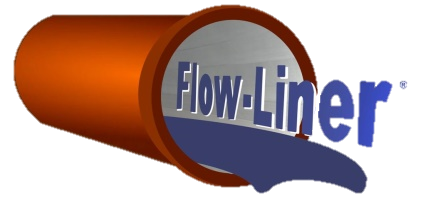About Flow-Liner®
Providing Non-Invasive Options for Extending the Life of Pipe, Conduit & Underground Ducts
Flow-Liner® is one of the world's leading pipe, conduit and HVAC lining system companies. Our success is driven by our people and their commitment to get results the right way by operating responsibly, executing with excellence, applying innovative technologies and capturing new opportunities for profitable growth. We are involved in virtually every facet of the pipe and conduit lining industry. We specialize in developing and manufacturing lining systems and materials for utilities, gas & oil, water & sewer, processing, HVAC, electrical, telecommunications, refinery, mining, residential, commercial and industrial industries.
Company Roots
We trace our beginnings to 1976 as a plumbing service and drain cleaning franchise located in Zanesville, Ohio. In 1987, this company expanded into pipe excavation and replacement. Due to all of the issues with excavation equipment, trench shoring and worker safety, a new company was formed in 2001 as an alternative to excavation and pipe replacement. That company was and is now, Flow-Liner® Systems, Ltd. specializing in trenchless non-invasive products and systems.
Global Scope
Our marketing network supports dealers and installers in Canada, Europe, South Africa and Australia. We also have multiple Installers throughout the United States. Our Technical Team travels nationally as well as internationally to support our dealers and installers.
Technology Serving Multiple Industries
We're focusing on technologies that improve our ability to find, develop and manufacture products and systems for multiple industries. In 2001, we specialized in the sewer and drain pipe lining industry. In 2007, we introduced the only NSF-61 certified lining system for small diameter potable water piping available in the US market. In 2009, Flow-Liner became the first liner manufacturer for the telecommunication and electrical conduit industry. Its brand name CIP-Conduit was utilized in The White House utility renovation project, as well as a project for the US Navy in 2012. By 2017, CIP-Duct for underground HVAC rehabilitation was developed. Flow-Liner® now produces products and installation systems for a multitude of industries. We will continue to stay on the cutting edge of technology and innovation now and in the future.
Environment and Safety
As a company and as individuals, we take great pride in caring for the communities where we live and work. Since there is little or no excavation involved with the installation of our products, and the surrounding environment is not disturbed, Flow-Liner's non-invasive pipe and conduit lining products are environmentally friendly and safe. The reuse and extension of the pipe or conduits life is also a plus for the environment.
Affiliates
Our Clients
AEP
Air National Guard
AK Steel
Anheuser-Busch
Bloomsburg University
Coshocton Fire Department
Duke Energy/Austin Technical Services
ERGON
FBI
Grand Central Station/GTF Joint Venture
Grove City Medical Center
Kalahari Resort
Lane Aviation
McDonalds
Morris Sheppard Dam/Conti Corporation
Navy
Ohio State University
Palace Theatre/Sauer Group
PECO
Roosevelt Memorial/Potomac Restoration
Starbucks
The Columbus Zoo
The Pentagon/B3 Enterprises
The White House
Wayne County Courthouse
West Virginia University
History of Pipe Lining
Pipe lining is a non-invasive pipe rehabilitation process that can be completed without excavation or demolition of property. It is a time and money saving option for the rehabilitation of multiple types of existing pipe systems. Flow-Liner® would like to give you a general history of when pipe lining began and how it is being utilized today.
Pipe lining has been performed in the US since the early 1970's. The technology arrived from Europe and was mainly used for large diameter sanitary and storm underground drainage piping in municipal infrastructures. Some of the actual equipment first used in pipe lining was patented in the early 1950's. The technology was known to only a few engineering firms and contractors, therefore it was not available to everyone. The technology became more and more popular after standards and specifications were adopted and engineering firms accepted the option of lining existing underground drainage piping.
It wasn't until the late 1990's that pipe lining became available to the general public. Pipe lining technology, in the same way most technologies evolve, went from being only capable of lining large diameter pipes to being capable of lining small diameter pipes. This opened the door to many applications and the market grew into residential homes and commercial building piping systems.
Now almost 40 years later and well into the 21st century, pipe lining is the main stream acceptable alternative to replacement piping. Quality standards are in place, including engineer testing for a life expectancy of fifty plus years for liners. The technology has also evolved into multiple applications and industries. These include potable water services, cooling systems, hot water piping, swimming pool and fountain pipes, process piping, mechanical piping as well as electrical & telecommunication conduit. This technology now allows pipes and conduits as small as ½ inch in diameter to be lined.
As with other non-invasive specialty technologies, lining requires a trained and certified installer in order to perform a professional lining project. Flow-Liner® prides itself with being capable of providing the necessary training, equipment, support and experience needed for the lining industry. This includes robotic cutters, pipe cameras, special preparation cleaning equipment, as well as a variety of liners and resins for a multitude of applications. Flow-Liner® is constantly researching and developing new products, systems and equipment for our installers' needs as well as developing lining systems for other industry and utility markets.
Municipal officials, facility maintenance personnel, mechanical, plumbing and electrical contractors and building maintenance engineers around the world are utilizing these technologies. Pipe and conduit lining will keep growing in demand and will become one of the world's largest industries.






